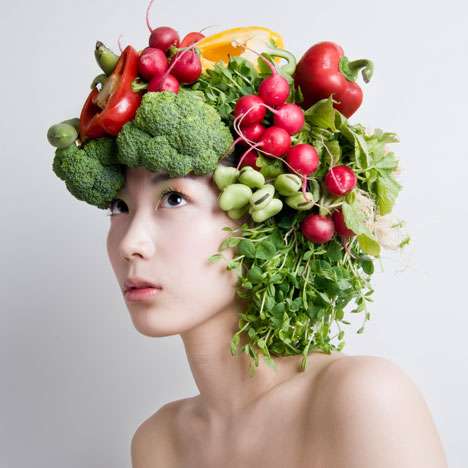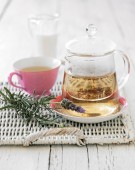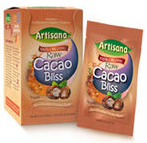It’s week three. The time is now. No more run ups…
we’re going cold turkey…no more sugar!

First up, though, some housekeeping:
* On Friday I invited you all to join FebFast (quit booze for February and raise $ for charity). It’s a good time to drop the booze if you’ve just quit sugar. It will help with the cravings and the detox process.
* A reminder to those of you with blogs. You may want to join the IQS affiliate program, and make $6 for yourself off every ebook you sell through your site. Stupidly simply and I’ve sent out hundreds of dollars to some of you who’ve got on board. You can read more and sign up here.
* Ten great sugar quitters won a copy of Lee Holmes’ Supercharged Food from last Friday’s giveaway: Carlie C, Emma, Rachel G, Sue S, Mademoselle Slimalicious, Jess J, Tara S, Kathie R, Sarah R, Kris B. Hoorah to you and big thanks for your tips!
But now. In my IQS book I outline what foods to cut out… and why. But today we might do a little reality check session of how much sugar you’ve actually been eating.
Hopefully you’re boldly replacing sugar with fat and protein from today. It takes some getting used to and you might notice different hunger levels. Find them interesting and move with them. For example. I often get a sugar craving after lunch. As many of you know, I eat a tablespoon or two of coconut oil to quash this…which then leaves me STUFFED until dinner. At first I found this disconcerting…now I find it a godsend. No afternoon snacking is freedom.
Something that helped me when I was quitting was to get real about how much sugar I’d really been eating.
EVERYONE I meet tells me they “don’t really eat much sugar”. Which I find kinda FUNNY. Somebody’s got to be eating all that sugar!
When I chat with people about what they mean by not much they describe a breakfast of muesli and low-fat yoghurt, juice, some honey in their tea…”you know, just natural sugar”. And so on.
Yep, by now you know: sugar is sugar, whether it comes in a Coke or an apple; arsenic is “natural”, doesn’t mean we eat it; etc, etc, etc.
But how much sugar – natural or otherwise – have you been eating? Have you been kidding yourself you don’t eat much?
I had. So I sat down with pen and paper and added up the exact number of teaspoons of the stuff I was eating. It was shocking.
This week, try it. It’s a good reminder as to why you’re doing this. Being real helps.
To do this:
* look on the food label at “serving size”. Then divide the number of grams by 4 to get the number of teaspoons.
* remember to subtract the first 4.7g of sugar in dairy products (this is lactose, which contains no fructose)
* double or triple the serving amount if you tend to eat up big. As I do.
* and remember:
from a biological point of view, we’re designed to be able to handle the sugar contained in about two pieces of fruit in a day, so about 5 teaspoons.
The American Heart Association advises about 6-9 teaspoons.
Some starting points:
* when calculating a piece of fruit, it gets tricky. But to give an indication, an apple is about 3 tsp of sugar (more than half of which is fructose, so it’s kinda the equivalent of 4.5 tsp of sugar), a banana is about 4 tsp
* that handful of raisins or dates or sultanas on your muesli? About 5-7 tsp (yes!). Dates are about 70% sugar!
* a glass of fruit juice = 10-12 tsp
* fruit toast = 6-7 tsp per serve (two pieces)
* a fruit muffin = up to 11 tsp
* a dollop of tomato sauce = 1-2 tsp
* Kellogg’s Just Right = 4-8 tsp (depending on serving size)
* light yoghurt = 4-6 tsp
* pasta sauce (from a jar) = about 4 tsp
Jot down a day’s worth (casting your mind back to a typical day…and going through your pantry) and add it all up. What did you arrive at?
Would you still say you “didn’t eat much sugar”?
try these for hunger/cravings

I’ve discovered these Artisana nut and seed butter snacks and I eat the coconut oil and coconut butter ones straight out of the packet with a spoon. The cacao ones are great for a chocolate fix. Honestly. So good. You can find them at select health food shops. Tip: put in the fridge to firm up…like a chocolate bar.
your questions answered
This week I’ve asked David Gillespie, anti-sugar activist and author of Sweet Poison, to help with some of your questions…
Emma asks: Eating glucose and other non-fructose sugars – won’t they just keep the need for the sweet taste alive? is this a problem?
David: we don’t become addicted to sugar because of the taste. The studies suggest the mechanism is an opioid addiction (just like nicotine). Fructose is the only sugar that stimulates an opioid response in our body (it causes a cortisol spike) – so just like a nicotine (also an opioid) addiction it is the chemical reaction that makes us want more not the taste.
Lady Ashford asks: Are all veggies considered ok? I noticed my pack of semi-dried tomato has 34g of sugar per 100g!
David: The dried tomatoes are just like any other dried fruit. Drying them concentrates the sugar and gives us you a big sugar hit without the associated bulk that would slow you down if you were eating the whole fruit. We should try to avoid all dried fruits (even ones we think are savoury).
KiKi asks: how do you feel about coconut milk yoghurts such as COYO? Good? Bad? ok? They say 0% sugars. I just can’t quite believe it?
Sarah: Coconut is naturally sweet, but contain virtually no fructose (some trace amounts). That’s why I’m such a fan. Just don’t go for the fruit flavoured ones, and remember normal yoghurt is fructose free AND tastes sweet, due to the lactose.
Rebecca asks: when is the best time to drink a specific tea, how many per day is recommended to get the best benefits and is it OK to have a variety of different teas each day – ie I would hate for one to be cancelling out the benefit of another.
Sarah: Most herbals are fine at any point in the day. I personally drink green tea in the morning (great for stabilising sugar cravings, but does contain some caffeine), dandelion root or leaf tea during the day (it’s a great detoxer, but can make you urinate a lot, so not great just before bed), camomile at night (it’s a relaxant and will help you sleep). Fennel and licorice are great after meals (they help digest) and I tend to keep some of the cinnamon/spicey teas for the cooler months (they are a little too warming in winter).
Kimbo says: If we’re saying that saturated fats aren’t as bad as we’ve been led to believe, are there ANY ‘bad’ fats we should be avoiding?
Sarah: YES! Fats are bloody confusing and really it’s mostly about how stable they are when heated and whether they contain omega 3 (good) or omega 6 (bad) fatty acids. There are roughly 4 types.
- Saturated fats, from animal fat and tropical oils: eg lard, ghee and coconut oil. These are healthy and the safest to cook with.
- Monounsaturated fat, such as olive oil. When cold-pressed, it’s great. It can be used for light cooking, but it does become a little unstable (rancid)…which is carcinogenic. I tend to use it cold on salads, rather than risk cooking with it.
- Polyunsaturated fat, or vegetable oils.We’ve been told these are healthy, but only some are. The ones to avoid – they are full of omega 6s and are very unstable when heated are
- Corn oil
- Soy oil
- Canola oil
- Safflower oil
- Sunflower oil
Nuts oils can be great, but are quite unstable and should never be cooked. They also contain a lot of Omega 6, so use sparingly. Flaxseed oil is full of Omega 3, but in an unstable form, so should be treated with care (ie kept cool and stable).
- Trans fats, such as margarine and the fat used to deep fry things = NEVER GO NEAR THEM. Highly carcinogenic …and the rest.
extra reading
If you haven’t watched this already, then now is a great time. You’re probably au fait enough with some of the science so it shouldn’t be too dense.
Robert H. Lustig, MD, UCSF is a professor of pediatrics and an endocrinologist and is something of a definitive voice with all this stuff. In this video he explains why sugar is making us fat. A great link to send to any of the “but where’s the science to back all this” sceptics.
Some of the points he makes:
- calories in = calories out is bullshit
- there’s an epidemic of obese 6-month olds…we can’t put our weight issues down to lack of exercise and high fat eating!
- our biofeedback system is what’s broken
- it aint’ the fat, people! (we’re eating less fat than ever, and getting more obese and sicker than ever…at inversely the same rate)
- Fructose is a poison, it’s not about the calories.
- He also explains the political reasons for why all this happened
That’s all for now folks. Give me feedback on what else you’d like answered. I’ll post info about the webinars shortly.


